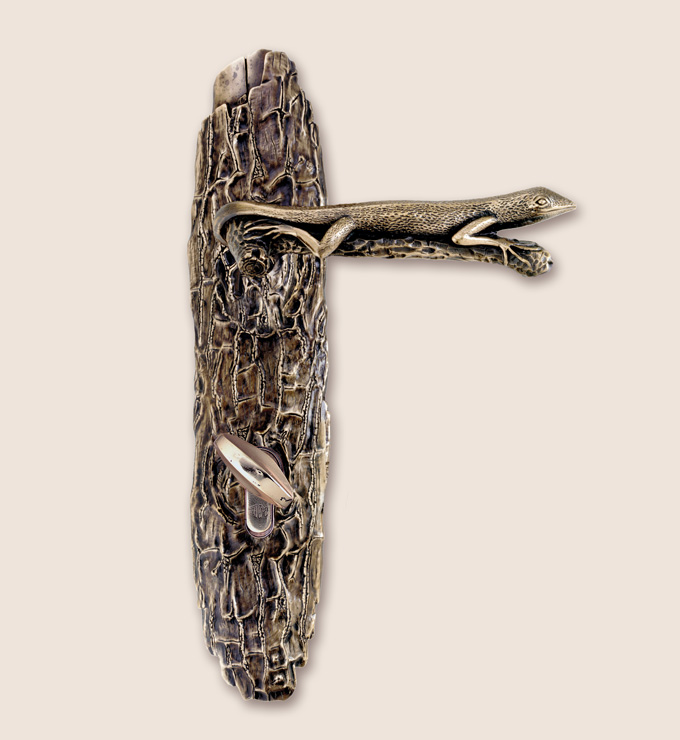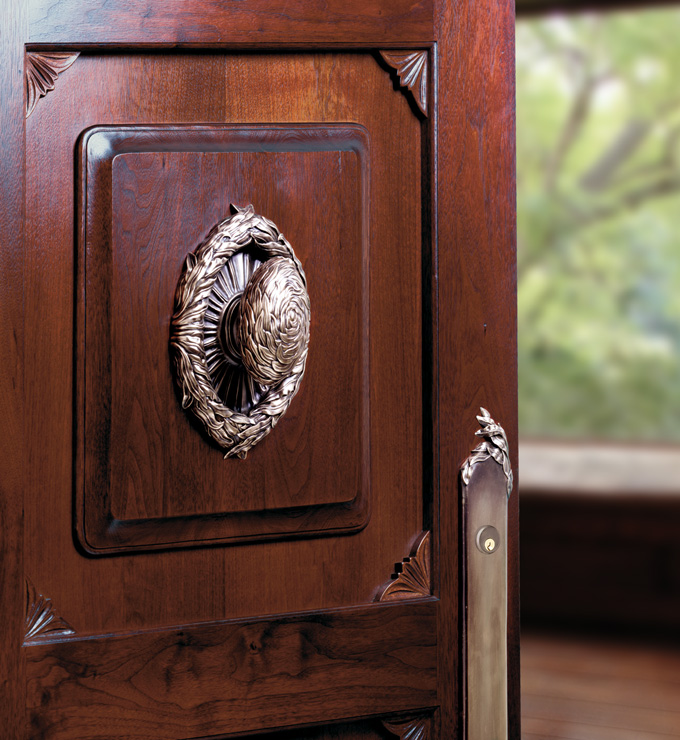When is a back plate a push plate? This is an interesting and easy question to answer and the correct answer is whenever the plate is large enough, wide enough and flat enough to easily push open a hinged swinging door.
Now that we have established the rules it becomes clear that most entry door escutcheons can be used as push plates provided they are ordered for this function.
Wasp, Dragonflies and Swallow add an Interesting Accent to the Hedgerow Entry Back-Plate Push Plate
Both collections have 22” high backplates where the decorative component is limited to the outer top and bottom edges leaving a flat unencumbered area of 14” that is more than enough to accommodate the palm of a hand.
We make all of our work to order and tool our back-plates after the plate has been cast. In so doing our back plates can be later machined to create a hole for a cylinder lock or thumb latch or can be left as a flat plate to function as a push-plate.
While both collections have elegant back plates that need no further adornment, we have begun re-imagining both with more whimsical additions.
Ergo minimalism
The simpler backplate is smaller at 12” and while it does not lend itself to whimsy the fact that the entire plate is unencumbered allows it to function well as a more understated push plate. The Ergo collection is available in stainless steel or bronze.
Vine and Bark Back Plates
Both entry plates are adequate in size and in my opinion would work equally well as push plates as while they are extremely textured the filigree does not protrude too far or have any areas that could catch on clothing.





